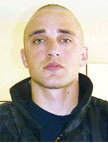
Features
Health and wellness
Hot topics
Fit for Life: Can you take the heat?
Can you take the heat?
December 13, 2007
By Aaron brouwer
 It’s summertime and the temperature is starting to heat up. This season brings reinforcements for the heat enemy against firefighters. Not only do we have to deal with the heat in a structure fire when battling the dragon, now when outside in rehab or staging we need to be aware of the heat the sun is producing. The hot weather will drain your energy, forcing a slower working pace. It is important to recognize the signs and symptoms of heat cramps, heat exhaustion and heatstroke.
It’s summertime and the temperature is starting to heat up. This season brings reinforcements for the heat enemy against firefighters. Not only do we have to deal with the heat in a structure fire when battling the dragon, now when outside in rehab or staging we need to be aware of the heat the sun is producing. The hot weather will drain your energy, forcing a slower working pace. It is important to recognize the signs and symptoms of heat cramps, heat exhaustion and heatstroke.
Heat cramps are cramps or tightening of muscle, usually caused by a loss of salt and water due to excessive sweating. This is commonly seen in calves and abdominal muscles.
Heat exhaustion occurs when working in a hot environment with high humidity, creating excessive sweating and body fluid loss. Sweating will not cool the body enough. Symptoms you may experience are excessive sweating, cold, clammy, pale skin, weak and rapid pulse, rapid shallow breathing, vomiting, blurred vision or dizziness, headache, nausea and painful cramps in legs and/or abdomen.
Heatstroke is a life-threatening condition that occurs when your body’s temperature control system fails or during prolonged exertion in high temperature. Symptoms you may experience are:
Dangers of heatstroke
1) rapid rise in body temperature;
2) rapid and full pulse, becoming weaker in later stages;
3) flushed, hot, dry skin (when body temperature control fails) and flushed, hot, sweaty skin (during prolonged exertion in high temperature);
4) noisy breathing;
5) vomiting;
6) restlessness or convulsions;
7) headache;
8) dizziness; or
9) nausea.
If you experience any of these signs or symptoms stop what you are doing, find a cool, shaded place to rest.
Loosen any tight clothing and drink plenty of water. If you are working on the fireground, be sure to let your officer know what you are experiencing so that you can be placed in rehab and able to recover under supervision of the rehab officer. If you are experience heat exhaustion or heatstroke you need medical help immediately.
Some tips for dealing with the summer heat on the fireground:
Dealing with heat
• Be sure to have staging in a shaded area so that firefighters are fresh and ready to go to work when called upon.
• Drink a bottle of water en route to fire.
• If you are in staging, rehab or returning to the truck after you have completed your work open up your turnout coat and pants; allow some air movement to get into your body to cool it down. If you are in staging or rehab take your turnout coat and helmet off so that you don’t overheat while waiting for or recovering from work.
• Drink lots of water. When assigned to staging, drink a bottle of water. When assigned to rehab, drink a bottle of water. If you aren’t currently working on the fireground you should be pre-hydrating your body, getting ready for the work to come.
Tips for working out
Just because its summer doesn’t mean the workouts need to stop either. Avoid working out during the hottest times of the day; go for runs or cycles in the morning or evening, when it cooler out. Drink plenty of water before, during and after workout. If your workout is in the heat, work out at a lower intensity level. The hot temperature will elevate your heart rate before you even start your exercising. Use alternate exercises to avoid the hot environment like swimming, water aerobic or running on a treadmill.
Heat illness is a serious condition. Take care of your body; watch for early signs and symptoms of heat illness. Like the old saying goes, “If you can’t take the heat, get out of the kitchen.” Put your ego aside, don’t be a macho man trying to work through it; deal with the heat before it knock you out. Have a great summer and drink lots of water.
Aaron Brouwer has 17 years of combined experience in structural and wildland fires. A graduate of Trinity Western University with a Bachelor’s of Human Kinetics, he is an instructor with Canwest Fire.
Print this page